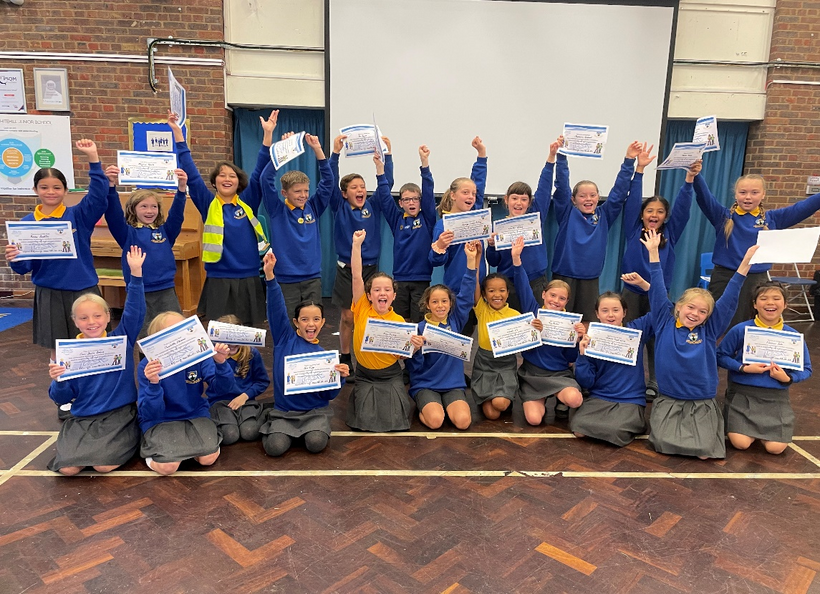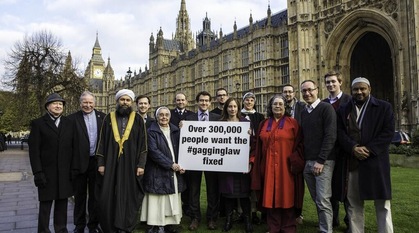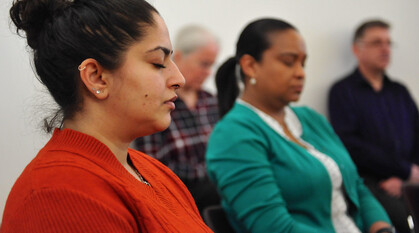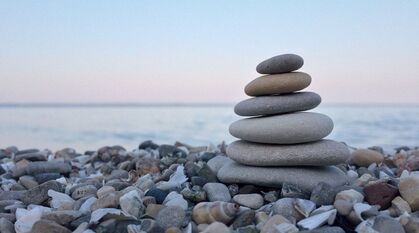Building hope for a peaceful world
Maísa Monteiro and Ellis Brooks reflect on the work that inspired this year's contributions pack.

In recent years the world has experienced various calamities, from a global pandemic to devastating wildfires, the war in Ukraine, and the climate crisis. How can a person keep on facing the many problems that require monumental resolutions? My answer is simple: hope.
We hold on to hope because it represents the minuscule flame that gives us the strength to fight everyday struggles, facing our challenges one day at a time, and that one day things will get better. To many, this seems to be a naïve sentiment, but according to the proverb: hope is the last thing to die.
This is the focus of our new contribution material: building hope for a peaceful world. I asked my colleague Ellis Brooks, Peace Education Coordinator, to share his experience in working with schools and teachers:
Peace education training
When Maísa asked me about where I find hope in peace education, it reminded of the phrase from Hebrews 11:1 defining faith as "the assurance of things hoped for and the conviction of things not seen". Faith and hope are on intimate terms.
Peace education is an act of faith for the teacher and learner. Faith in ourselves, faith in each other, faith that we can do things differently tomorrow. If you believe in God, then you might see God in all those places.
Sometimes the goal is obvious: I will learn X so I can do Y. The peer mediators we and our partners train in conflict resolution know what they're aiming for. Their hoped-for thing is that they will have the tools to be peacemakers, and their conviction is that their school can be more peaceful. They have faith that the first time they work with a peer with a 'real' conflict, they will be able to help. They have faith that their peers will try to make peace together.
Faith and hope in peace education
When I was accompanying Bristol Quakers training some peer mediators earlier this year, the violence in Ukraine was in the back of my mind. But the children gave me hope through their commitment, especially a boy we met from Russia who loved showing off his peace making skills. He was boosting my faith, and it made me think about what education, open or in secret, had prepared so many Russians to refuse to fight or even criticise the government at such risk to themselves.
Sometimes, the thing hoped-for is righting a wrong. Our Peace Education Network partners, Journey to Justice, have collated amazing stories of young people taking action, like Natasha's school friends who in 1991 prevented her deportation to Angola in a time of war. They had to act out of hope that things could still be changed.
No doubt Natasha and her friends learnt heaps from their experience as campaigners, but they were also educators: educators of their school, their community, their government. They are still educating three decades later, as we continue to share their story (and others like it) with young people today, challenging them to find their hoped-for thing and find the conviction to go after it.
Sharing peace education
We have conviction that it is worth sharing peace education. We can draw faith from the evidence base for peace education, brought together in our report Peace at the heart: a relational approach to education in British schools. But I also get a lot of hope and faith from working with other educators. After a day's peace education training with us, teachers often don't want to write long evaluations (who does?), but even dashed off lines mean a lot, like “insightful", “it gave me lots of ideas" or “the most useful part was the practical activities we can adapt in our own teaching".
Often, what those teachers do with the peace education training we give them is a thing unseen. 250 educators trained per year might mean 1000+ young people experience peace education every year that follows. Sometimes, we don't know why we're learning – there isn't always a tidy learning objective we can put on the board, but we have faith that learning for peace is possible.
We also usually can't say what happens to the 5,000+ peace education resources that teachers have downloaded in 2022 so far, but the fact they download them is itself an act of faith.
Some feedback comes months or even years after the training, such as a Quaker teacher who went on to set up a mediation scheme, or the peer mediator who grew up to be a peace worker in Yemen. There's the trainee who decided to do a lesson on white poppies during Remembrance, and the sixth formers who wrote, "today has opened my eyes as someone who is unsure whether war can be justified or not that peace brings better outcomes" and "the smallest actions can create big impacts".
And we take hope because we're not alone. We have a lot of faith in our friends and partners in Our Shared World, Peace Education Network, Peer Mediation Network, the Global Campaign for Peace Education, and many local projects (Quaker or otherwise), striving out of their conviction that a more just, peaceful and sustainable world is possible.
So yes, sometimes it feels like night is drawing in figuratively as well as literally, but in the darkness, educators can still have conviction in things unseen.
Supporting the work
This work would not be possible without your generous contributions – thank you! With your support, we can continue to do this work in the world. Please view, download and share our latest contributions pack and help us keep building hope for peaceful world.


